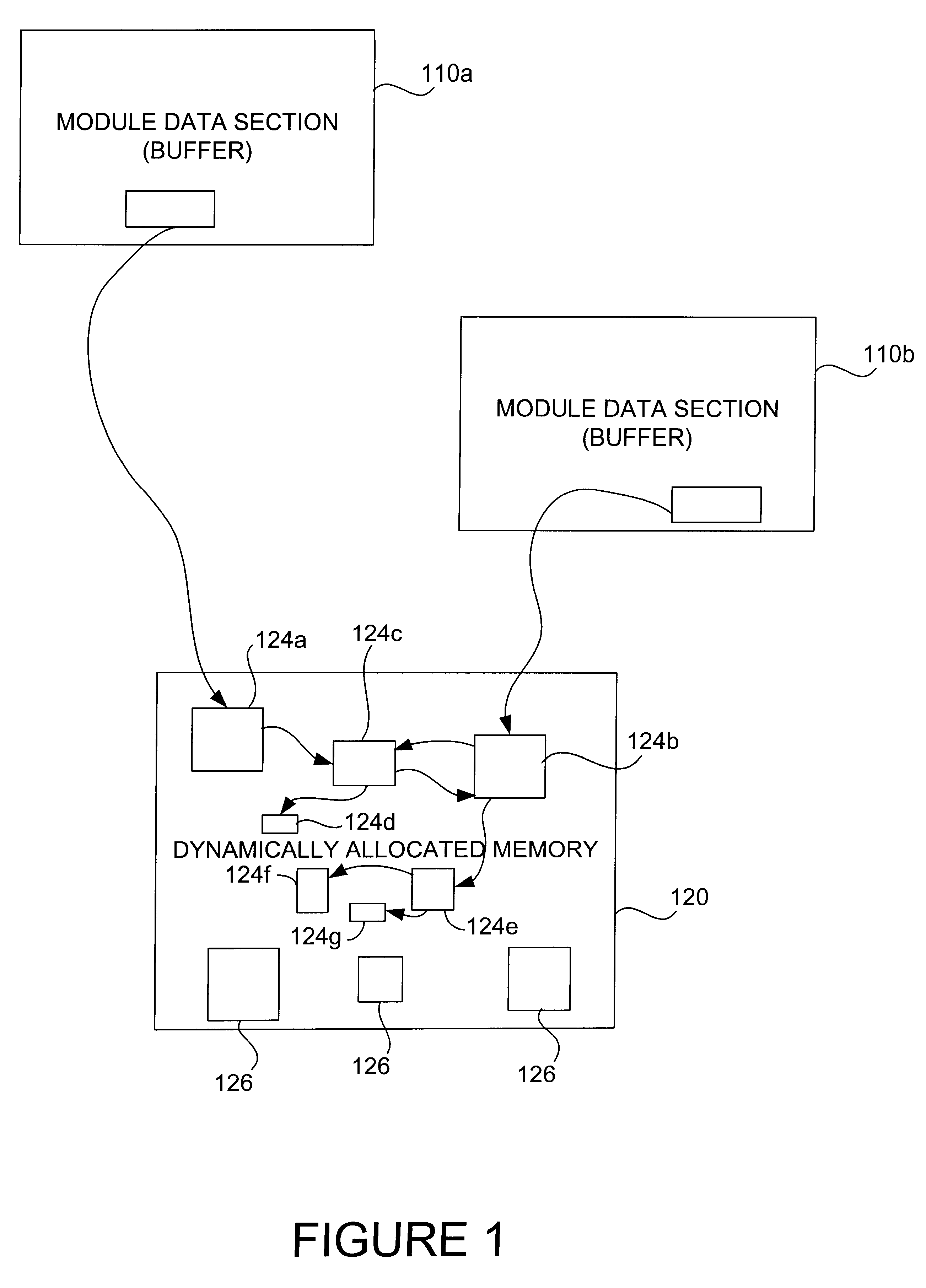Method and apparatus for post-mortem kernel memory leak detection
a technology of post-mortem kernel and detection method, which is applied in the direction of memory allocation/allocation/relocation, instruments, fault response, etc., can solve the problems of memory leakage, limited memory available to computing systems or, more specifically, processes executing on computing systems, and memory leakage,
- Summary
- Abstract
- Description
- Claims
- Application Information
AI Technical Summary
Problems solved by technology
Method used
Image
Examples
Embodiment Construction
When a memory leak occurs in a computing system, the execution of an operating system is typically compromised. Memory leaks may result in a slow operation of an operating system, and ultimately result in insufficient memory being available for memory allocations. Unless a memory leak causes an overall machine failure, or causes a kernel to hang indefinitely, a memory leak is difficult to locate. Searching for memory leaks is generally time-consuming and inaccurate. Standard methods used to identify memory leaks often involve studying the number of memory allocations to determine if an unusual number of memory allocations has occurred. While such methods may be relatively effective in identifying both large memory leaks and memory leaks which are associated with frequently executed code, such methods are typically ineffective in identifying infrequent or small memory leaks.
In general, when a kernel "dies," i. e., when a machine failure occurs, the operating system ceases to operate....
PUM
 Login to View More
Login to View More Abstract
Description
Claims
Application Information
 Login to View More
Login to View More - R&D
- Intellectual Property
- Life Sciences
- Materials
- Tech Scout
- Unparalleled Data Quality
- Higher Quality Content
- 60% Fewer Hallucinations
Browse by: Latest US Patents, China's latest patents, Technical Efficacy Thesaurus, Application Domain, Technology Topic, Popular Technical Reports.
© 2025 PatSnap. All rights reserved.Legal|Privacy policy|Modern Slavery Act Transparency Statement|Sitemap|About US| Contact US: help@patsnap.com



